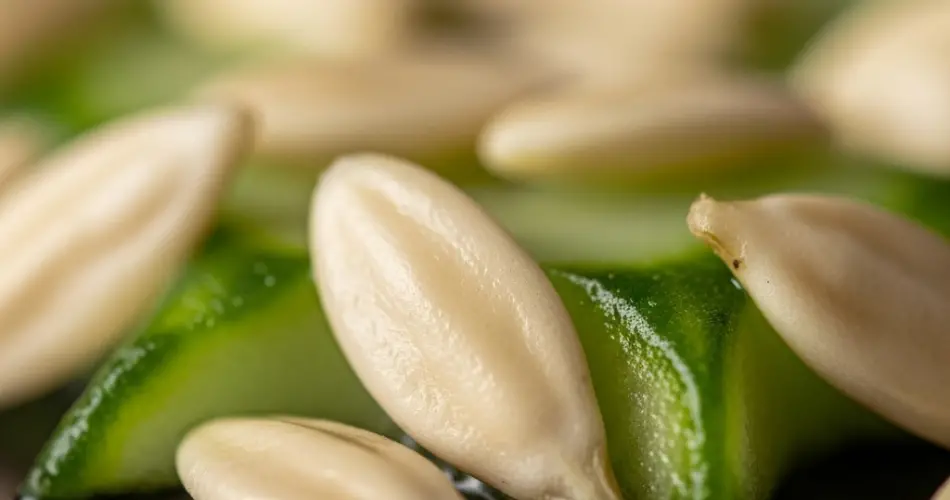If you’ve ever struggled with slow or patchy cucumber germination, weak seedlings, or disappointing early growth, you’re not alone. Many gardeners plant cucumber seeds the traditional way—straight into the ground or seed trays—only to find themselves disappointed by uneven sprouting or plants that never seem to catch up.
But there’s a simple planting method that changes everything. Once you try it, you’ll likely never go back. It boosts germination, strengthens seedlings from the start, and leads to earlier, more vigorous growth. Best of all, it’s incredibly easy to do with materials you already have at home.
Why Traditional Sowing Often Fails
Cucumber seeds are sensitive to soil temperature, moisture levels, and fungal conditions. Even slight variations in any of these can lead to:
-
Uneven or delayed germination
-
Rotting seeds in the soil
-
Weak, leggy seedlings
-
Slow early growth
When seedlings get off to a rough start, they often struggle to recover fully. But a simple change to your sowing process can help avoid all of this.
The Method That Changes Everything
This improved sowing method involves pre-germinating cucumber seeds using a natural nutrient solution, then planting them at just the right stage for rapid growth.
Gardeners who’ve adopted this approach consistently report:
-
Nearly 100% germination
-
Stronger, thicker seedlings
-
Faster root development
-
Earlier fruiting and better yields
Step-by-Step: How to Do It
Step 1: Seed Selection and Preparation
Choose healthy, fresh cucumber seeds—ideally from a reliable source or previous year’s harvest.
If your seeds have a hard outer coating, gently scarify them by rubbing a few seeds between two sheets of sandpaper or with a nail file. This helps water penetrate the seed coat more easily.
Step 2: The Pre-Germination Soak
Create a natural growth-activating solution using:
-
1 teaspoon of honey or aloe vera juice (natural biostimulants)
-
1 cup of warm water (not hot)
Soak the seeds in this solution for 6 to 8 hours at room temperature. This helps activate the seed’s internal growth processes and protects it from fungal infections.
Step 3: Sprouting in a Moist Environment
After soaking, place the seeds between two damp paper towels or pieces of cloth. Put them in a shallow container, then cover lightly with a lid or plastic wrap to maintain humidity.
Leave the container in a warm place (around 25–28°C / 77–82°F). Check daily and keep the cloth moist but not soggy.
In 2–3 days, you should see tiny white roots emerging. This is the perfect stage for transplanting.
Step 4: Planting Pre-Sprouted Seeds
Once the seeds have sprouted, gently transfer them into prepared pots, seedling trays, or directly into the garden (if outdoor temperatures are stable above 15°C / 60°F).
Plant each seed sprout 1.5–2 cm deep with the root facing downward. Water gently and keep in a warm, bright area.
Why This Method Works So Well
This approach solves many common cucumber planting problems by:
-
Avoiding seed rot in cold or overly wet soil
-
Ensuring rapid and even germination
-
Reducing transplant shock, since only strong seedlings are planted
-
Encouraging earlier harvests due to a head start in development
Adding honey or aloe to the soaking solution gives the seeds a natural dose of enzymes, vitamins, and antifungal properties. These help the seed break dormancy faster and stay protected from soil-borne pathogens.
Bonus Tips for Best Results
-
Use light, loose soil when transplanting to avoid compacting delicate roots.
-
Harden off seedlings before moving them outdoors by gradually exposing them to sun and wind over 5–7 days.
-
Mulch around the base of young cucumber plants to maintain moisture and warmth.
-
For extra strength, water seedlings once a week with a diluted solution of fermented banana peel tea or wood ash water for added potassium and micronutrients.
The Results Speak for Themselves
Gardeners who switch to this method often report:
-
Stronger, stockier seedlings
-
Earlier flowering and fruiting
-
Larger harvests, with more consistent cucumbers
-
Reduced loss of seedlings, especially in early planting stages
Once you see how well it works, it’s hard to go back to dry-seeding methods.
Final Thoughts
Changing how you sow your cucumber seeds may seem like a small adjustment—but the payoff is huge. With just a few extra steps and natural ingredients, you can drastically improve germination, seedling strength, and overall plant productivity.
If you’ve been disappointed by weak or slow-growing cucumbers in the past, give this method a try. You may find yourself, like many gardeners, regretting that you didn’t start sowing this way sooner.
But the good news? Now you know. And the next harvest will be your best one yet.



